Description
Lutino Cockatiel for Sale,the gorgeous Lutino Cockatiel was the second cockatiel mutation to be established, with the first being the Pied Cockatiel. Unlike the Pied however, the Lutino Cockatiel for sale,took the aviculture world by storm. It became an immediate hit because it was so like a miniature white Cockatoo with a pale yellow breast and almost white body, tail, and wings.The head and crest are a primrose yellow and both sexes have bright orange cheek patches and red eyes. This was like the story of the ugly duckling turning into a beautiful swan.
All Lutino Cockatiels are descended from one single male cockatiel. It was in a nest of two of these youngsters, in 1958, that he was surprised with a baby with pink eyes. It did take another two years for Mr. Barringer to mate a female lutino daughter back to the father to produce the first male lutino.
Cockatiels are probably the most popular of the parrot family with their main competition being the Budgerigar.They are hardy, easily handle changes in their home, and are easy to breed. On top of that, keeping a cockatiel as a pet is easy because they are not noisy parrots and they are comfortable when left alone for long periods of time.
Cockatiel’s evolved as nomadic creatures, surviving in a variety of diverse and rugged habitats. They are constantly on the move, changing locations with the seasonal fluctuations of food and water supplies. This native habitat and their adaptive behavior has made them well suited as pets.
Care and feeding of a Lutino Cockatiel
Good sized bird cages are a must for good cockatiel care. The cage for a cockatiel should measure a minimum of 24″ length by 18″ high and 18″ wide. This will leave enough room for several toys and still give the bird room to fully stretch his/her wings without hitting them. Many birds can spend most of their time on a playpen or parrot perch. Bird food consists of a variety of sprouts, seeds, nuts, fruits, vegetables, and commercial pellets.
Bird Food:
A commercial cockatiel seed mix is generally regarded as suitable along with a good vitamin supplement.
You can supplement your cockatiel’s diet with green foods such as dandelion leaves, weeds, carrot tops, celery, watercress, spinach, peas, seedling grasses, and millet.
Cuttlebones are recommended to help provide calcium and to help keep the beak trim.
Grit should not be provided. Parrots that eat seed whole without shelling it first require grit, but cockatiels shell their seed before eating it, so don’t need grit.
Water:
Give your cockatiel fresh drinking water every day. You can also add soluble vitamins and minerals to the water.
Bird Baths:
Your Lutino Cockatiel (for Sale) will enjoy a bath! Bird baths can be either a dish in the bottom of the cage or a light misting with a spray bottle.
Bird Grooming:
Cockatiel care also includes grooming. It is important to keep their wings clipped. This will prevent your cockatiel from taking to the air and you never seeing it again. It also facilitates taming cockatiels. Fresh branches from trees and bushes such as oak, maple, and fruit trees will give hours of chewing and climbing pleasure while exercising and trimming the beak and nails.
Good cockatiel care will keep your bird healthy and active for years. Fresh food and water must be provided daily.
Housing
Bird Cages:
Cockatiels love roomy cages! Cockatiel cages must be at least wide enough for the cockatiel to spread its wings out without touching the sides, so a very minimum of 18″ wide by 18″ high by 24″ length (45 x 45 x 60 cm) is essential. Chew resistant metal cockatiel cages are important, as wooden cages will easily be destroyed.
Cockatiel cages with horizontal bars on the sides are nice because these little birds love to climb. Using a cage skirt or fine screen around the bottom of the sides will help lessen seed scattering.
Bird Perch:
Provide one or two perches about 3/4′ in diameter and dishes hanging from the side for feed, water, and grit. Try to place the perches away from dishes so the food and water dish do not become soiled with bird droppings. Do not use plastic because your bird will chew and break the plastic and it can become hazardous.
Where to Place Cockatiel Cages:
Place the cage in an area out of drafts and sudden temperature changes. Putting it at eye level or higher will make the bird feel more secure. Covering the cage at night is not necessary but will help to keep the bird calm and give it a greater sense of security.
Aviary:
A roomy outdoor aviary (depending on your area) can be a good choice. Do not house with lovebirds, however, as lovebirds can be very aggressive birds. The outdoor aviary needs to have a protected shelter that can be heated and cooled where necessary.
Appearance Of Lutino Cockatiel
The lutino’s appearance Yellow/white bodies with orange cheek patches and a yellow head and mane are also found in cockatiels. Red eyes appear in infants and gradually darken as they grow older. The cockatiel mutation, in reality, lacks melanin pigment. As a result, this mutation allows for the creation of black, brown, and grey colors. As a result, the hue of the cockatiel can range from yellow to creamy white, with orange cheek patches. Some golden color can be found on the crest, sides of the face, and tail. Flesh-colored beak, foot, and toenails.
The golden crest is one of the most recognizable features of Lutino Cockatiels. Cockatiels, unlike many other crested parrots, have lengthy tails that account for roughly half of their body length. Some Lutino Cockatiels have a bald area beneath their crest. Selective breeding is reducing this feature, and it is not a symptom of a problem with your bird.
Social Behaviors of Cockatiel bird
Cockatiels travel in flocks in the wild and this influences cockatiel behavior in captivity. Their social ‘flock’ disposition along with their native habitat makes them well suited as pets. They are hardy, adapt easily to change, and are easy to breed. A big plus is that cockatiels are not noisy and can be left alone for long periods of time. They make a very loving and devoted pet if bonded properly.
Toys designed to be destroyed by small beaks are perfect for cockatiels and include pieces of paper, cardboard of soft wood or non-toxic rawhide to chew up. Cockatiels also like toys with hard-plastic elements, such as beads to fiddle with. Male cockatiels often seek out mirrors and other reflective items to whistle to.
Temperament
Lutino cockatiels are generally very mild-tempered and easy to keep. They love affection, company, and a variety of playthings. Your Lutino will be a highly social creature to both their humans and other bird friends.
Lutinos, like most birds, can get very depressed if they’re left alone for long periods. They thrive on interaction with other creatures. Loneliness can cause a wide range of health and behavioral problems. Proper socialization is an absolute requirement when you own one of these amiable parrots.
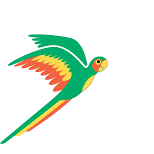
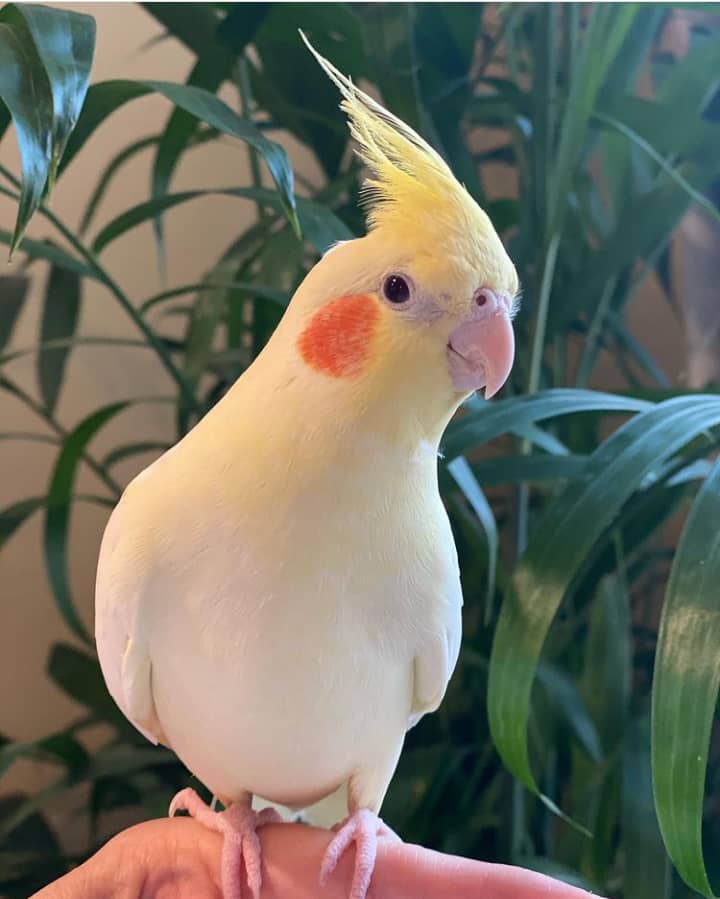
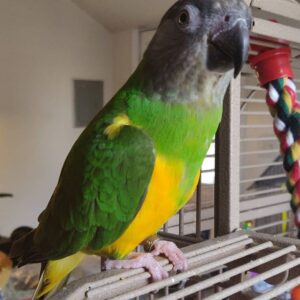
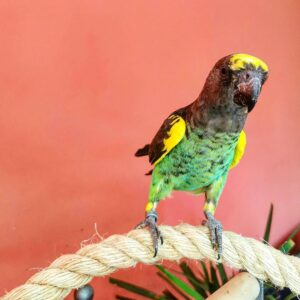
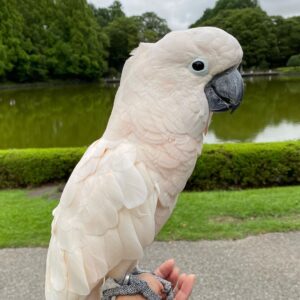
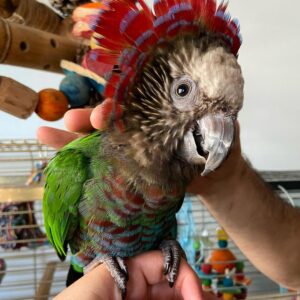
Reviews
There are no reviews yet.